“Who needs pre-booking? Let’s do it on our own!” This is what we said, when we got the quote from the trekking company. Almost 280 USD per person would the three-day horse trek to Song Kul cost. It’s including transport and meals, but we are in Kyrgyzstan and there must be a cheaper way.
Song Kul is a lake above 3000 meters altitude in the Naryn area. In summer, herders live up there with their families. The place has a great reputation for its scenic views and high abundance of all kinds of livestock. Horse trekking is very popular up there and my friend Simon and I had decided to go.
Our Kyrgyz friends are not happy with our decision. “It’s too cold and too dangerous. There are wolves and bandits!” Later, it turns out they’ve never even been at Song Kul. For some reason, the Kyrgyz have little faith in a foreigner’s skills to survive in their mountains.
“Wolves and bandits, hm? Well, I wouldn’t mind a little adventure!” I think, pack my backpack and head out. From Bishkek we take a mashrutka to the town Kochkor. From there it’s only bad roads to the mountain village Kyzart, the starting point for the trek. Of course, we didn’t know that this is the end of the mashrutka track. We paid about 1200 Som for a 45 minute ride. For this kind of money you can drive all the way down to Osh.
Our driver gets us to a homestay that calls itself “hotel”. No problem that we didn’t have a reservation. We are the only guests on this sunny afternoon in late September. The hotel owner is drunk but since we didn’t pre-book, we didn’t give him a chance to prepare for visitors. And honestly, what can you do in a remote mountain village? The hay is home, the apples are picked everything is ready for winter.
The hotel owner turns out to be a pleasant guy despite his tipsy state. However, communication is down to a minimum. Our Russian is as poor as his English. In addition, he keeps making an odd propeller sound with his mouth. He doesn’t do it in the next morning, so it seems to be clearly alcohol related. Staying at the hotel over night costs about 400 Som. Breakfast is included and quite opulent. We didn’t buy any other meals in addition. In the evening, we point out on the price list, what we’d like to order for the next morning: Two horses for each 500 Som per day and a guide with a horse for 700 Som per day. Our host nods and walks off, doing the strange propeller sound. Simon and I look at each other: “Do you think we’ll really go horse trekking tomorrow?” – “We’ll find out.”
Indeed, the horses are saddled and ready to go in the morning. Our guide’s name is Achlbek. He doesn’t speak any English, but seems to be quite relaxed about it. After all, he gets paid for taking us up there and not for keeping us entertained. Both our 70-liter-backpacks disappear in his saddlebags. He rides the tallest and strongest horse. It looks like it can easily handle the weight.
All the horses look well fed and healthy. If we understand him right, Achlbek used to be a veterinary. We didn’t expect helmets or other safety gear and we were right. Simon gets an airy brown horse with quite some temper. Later he would have a hard time finding the breaks. Me, the little girl, I get the calmest horse. My Russian doesn’t suffice to tell Achlbek that I’m not a bad rider. As far as I know, Kyrgyz women have excellent riding skills. This seems to be about me being a foreigner again. And I really wish the Kyrgyz would be a little less gentlemen and not lift me up the horse every time.
The trip starts very relaxed; our horses follow Achlbek’s lead. Simon and I just need to lean back and enjoy the view. First we ride on a path along the river lined with a wide variety of flowers. Then we pass an old Muslim cemetery with the typical halfmoons on minarets. The traditional Kirghiz saddle, a wooden frame covered with a bunch of blankets, makes you feel like you are sitting high up on a throne. It’s extremely comfortable. Every one of us is holding one of those typical Kyrgyz leather whips. In Europe some people think, using a whip is cruel. For the Kyrgyz, however, it’s just a habit to hold it in their hand. During the whole trip I haven’t seen Achlbek hit his horse.
As the horses climb the rocky mountain pass to Song Kul, we come across a single yurt. The herder welcomes us and immediately his wife brings Kymys, fermented mares’ milk. I get a mug filled up to the rim. I know, it doesn’t go well with my stomach but it seems impolite to refuse. Later, I regret drinking the whole thing. Let’s just say, riding wasn’t much fun for the rest of the day.
In the afternoon, we reach the top and we stop for a moment to enjoy the view. The lake is surrounded by mountains on all sides. Then we look for a place to spend the night. Achlbek seems to have something in mind and sets course to the hills on our left. When we get there, a bunch of people is loading furniture on a truck and a little cat is walking on the blank ground, where the yurt used to stand. We are too late. The family is about to leave to their winter home in the valley. They didn’t know we were coming. No pre-booking means a lot of improvising.
One of the Kyrgyz men on the truck tells us that back the other way, there is another yurt camp that takes in tourists. As soon as we get there, the family offers to cook us dinner. First we refuse, afraid of unexpected additional cost. “We have fresh fish”, they say and immediately we change our mind. None of us had tried the local fresh catch. We are at the camp where the fishermen hang out. Boats and nets are lying on the lake shore. Later people tell me that fishing is not allowed at Song Kul. But I have to admit, this fried, forbidden fish is about the best thing, I had eaten in a long time.
In the evening the fishermen come and ask us if we’d care for some beer. As soon as we agree, one of them jumps on a horse and gallops off towards the hills. It looked like the most normal thing, like jumping on your bicycle. Someone once told me, the Kyrgyz learn how to ride before they learn how to walk.
An hour later the guy returns in a similar speed. He carries a 1.5-liter plastic bottle of Shivoie in his hand. We sit in the family’s yurt, drink beer and our host plays the Komuz, the traditional Kyrgyz guitar-like instrument. For a short time, we are wondering if we will find the “folklore show” on the bill, but they didn’t charge us. I think the guys were just happy about some company. It’s the end of the season and there are not too many people around anymore.
Of the things our friends had predicted, so far only one came true: It was really cold during the night. Simon and I laugh about the lack of “wolves and bandits”, until we get to our yurt. Our food had been stolen by “wolfbandits”: We left the door open and the herder’s dogs came and ate it all. Bread, cheese and sausages were gone, including plastic wrapping. Even the apples had some bite marks. You can’t blame the Kyrgyz dogs. They don’t get fed much and are always hungry. However, this meant we’d have to spend additional money on meals.
The apples, I tried to feed to the horses the next day, but they didn’t even look at them. It seems that horses in Kyrgyzstan are just used to eating grass and hay. To give your horse treats is clearly a Westerner’s thing.
The next morning, Achlbek sets out early to find the horses. They were grazing freely over night, however, they didn’t get very far. Achlbek had tied the lead-horse’s front legs with a rope. I’ve seen this a lot in Kyrgyzstan. The horses can only do little jumpy movements. Simon and I call them “bunny horses”, because it’s kind of funny to watch. Again, you could say this is a cruel tradition. There are horses that get lost and the rope stays on too long. It cuts their legs and the wounds get infected. A Kyrgyz horsemen told me that if it’s done right, this cannot happen. “Horses are the wings of men”, he said, “and if your wings are hurt you cannot fly”. As anywhere in the world there are people who take good care of their animals and others who don’t. You have to consider, we are in a country, where people rely on horses for transport. Somehow you have to make sure they won’t run away.
Today, we leave the bags behind and take the horses out for a galop along the lake shore – not on purpose. It all started with me trying to take a picture of Simon and Achlbek riding towards me. What I don’t know, a real Kyrgyz man doesn’t let himself get overtaken by a woman. When I try to trot ahead, he speeds up and our horses run in fast gallop. Poor Simon who was cleaning his sunglasses, did not pay attention. His horse did. When it starts running, Simon handles it well but drops the sunglasses. I feel a little guilty that he broke them because of me. The gallop was a lot of fun though.
The next morning, it’s time for us to head back. On our way down to Kyzart, Achlbek puts up a fast pace. He had bought some fish and didn’t want it to get spoiled in the warm weather. Our horses adjust their trot to keep up. Simon and I feel like we are riding on jack hammers.
Back at the “hotel” our butts hurt. The owner greets us with the propeller sound. He’d been drinking again. We want to go back to Kochkor today, but he tells us that there is no transport in the afternoon. Both of us weren’t in the mood for a long walk in the sun. So we decided to suck it up and stay for another night. Fortunately, in one of the rooms, we find a fairly big flatscreen-TV together with a stack of DVDs. It doesn’t matter that they are Russian language only. Boredom kills and we watch them anyway. Fortunately, it’s all action movies without sophisticated dialogues.
Altogether, we paid each only 150 Dollars for the trip, 130 less than the travel agency had quoted. However, we spent two days more than we intended and it wasn’t all sunshine, lollipops and rainbows. Going on trips without pre-booking can and will end up in some inconvenience. Afterwards it gives you a lot to laugh about. We chose this kind of traveling to save money but also because it’s exciting not to know what will happen next.
If you prefer a more professional approach, you should go with a specialized horse trekking company i.e. Shepherd’s Way Trekking on the South Side of Issyk Kul. They not only provide safety equipment but also a translator and a cook for each trip.
[information]There used to be an original Kyrgyz horse but during times of the Soviet Union, the Russians mixed in European breeds i.e. English Thoroughbred or Russian Trotter. They created a breed called “Novokyrgyz”, taller and faster than the “old” Kyrgyz horse but less enduring in mountainous terrain. Today, people do a lot of criss-cross breeding, which is why there are all kinds of different looking horses around. For dressage and jumping, however, horses got imported. For example, the government subsidized Equestrian Center in Bishkek (Bakinskaya street) trains kids on German Hannoverian or Trakehnen breeds.[/information]
[information]In Kyrgyzstan horses have three traditional roles: They provide meat and milk, transport people and cargo or entertain in horse racing or games. Usually people only ride the male horses. The mares are kept for milk. It usually gets fermented to the traditional Kymys with about three percent alcohol. In summer, you see the foals tied up, to prevent them from drinking too much of their mothers’ milk. This lasts only for several weeks, after that they roam freely with the herd. The free horses, you see in the mountains are not wild, but belong to someone. They have to find their own food and have never seen the inside of a stable. However, they are more prone to wolf attacks. [/information]
[information]Currently, a horse in Kyrgyzstan costs about 1500 USD.[/information]
„Kirgisistan: Pferdetrekking auf 3000 Metern“ publiziert im Online-Reiseführer TripsbyTips. Hier zum Link.
___

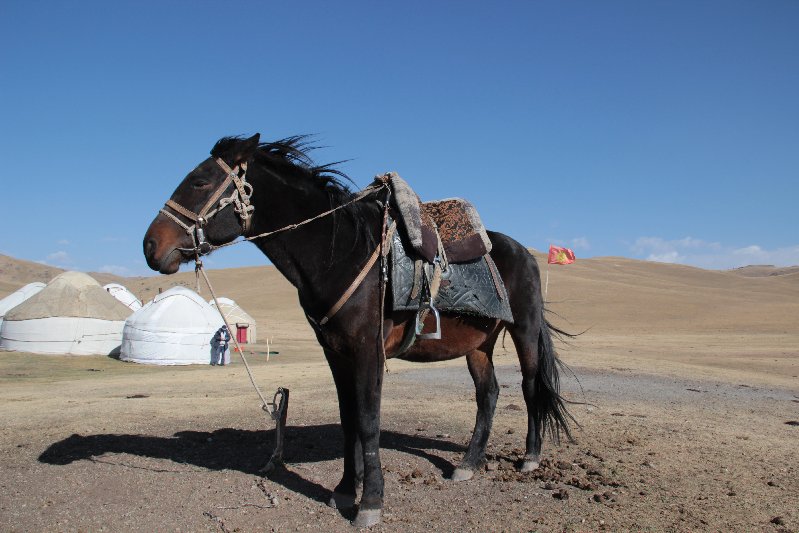
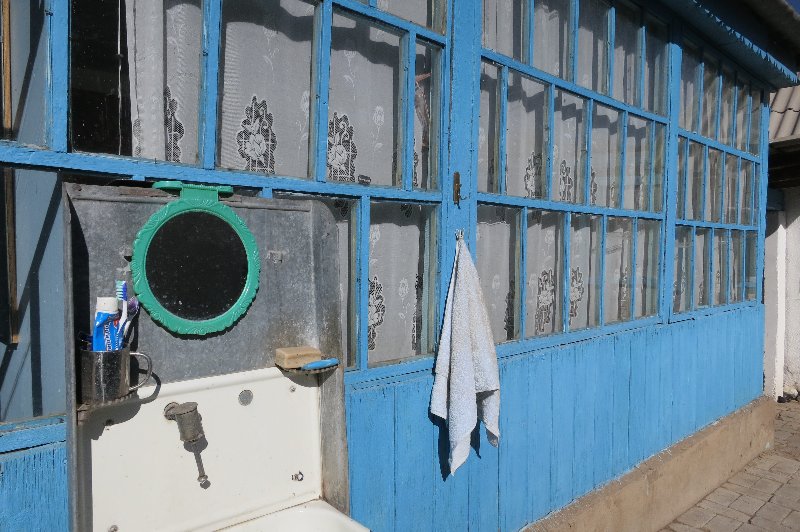
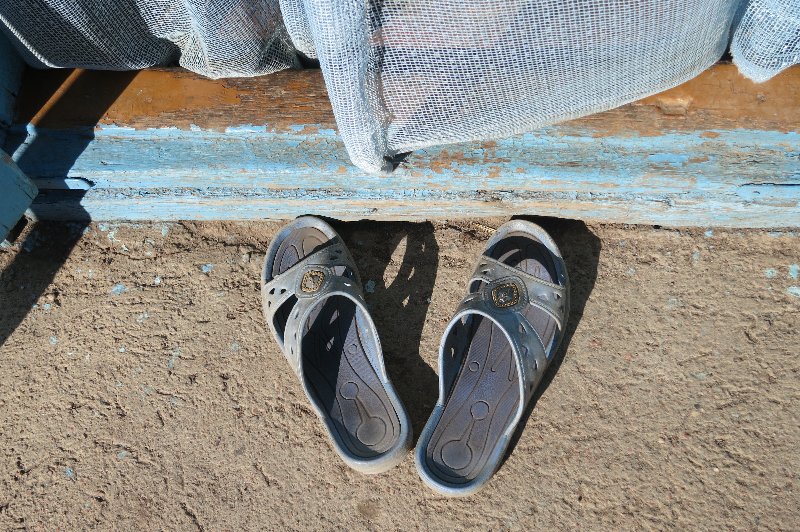
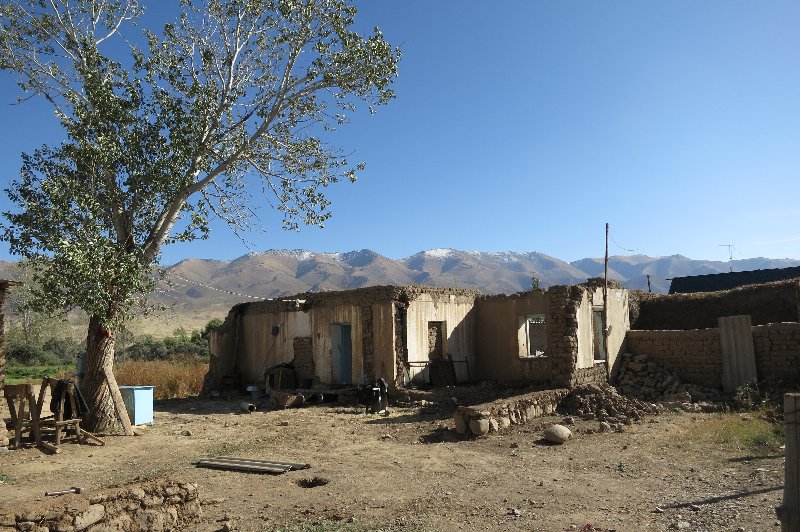





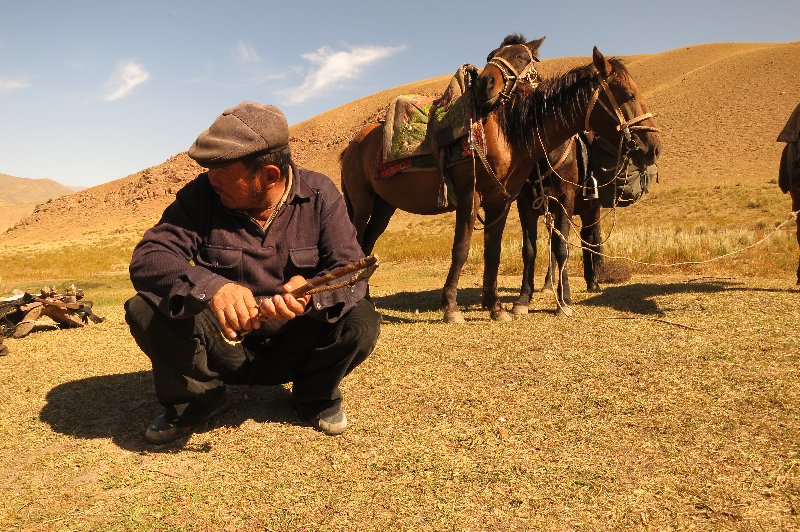

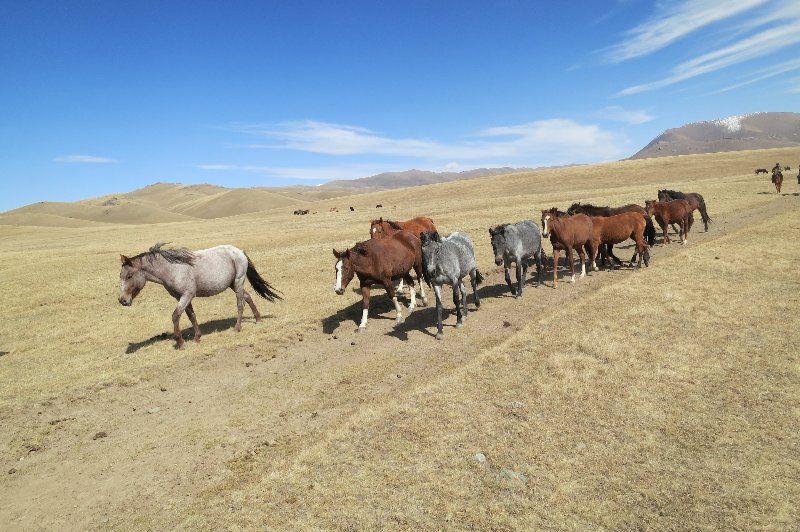
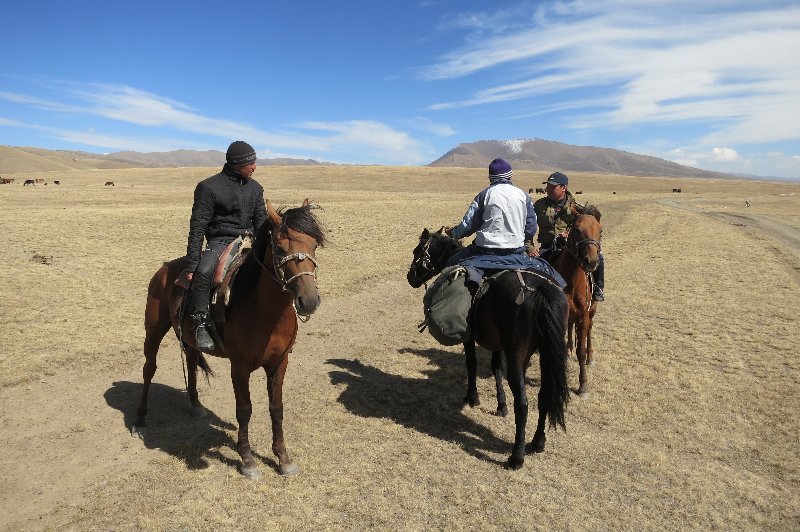
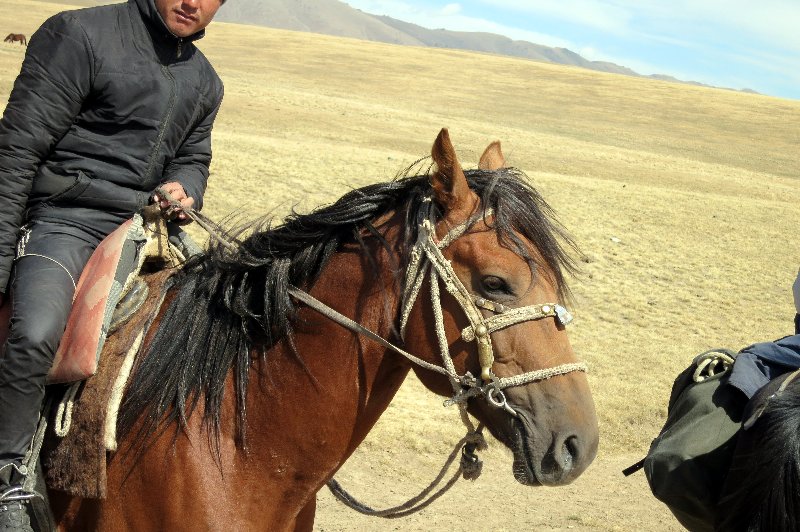
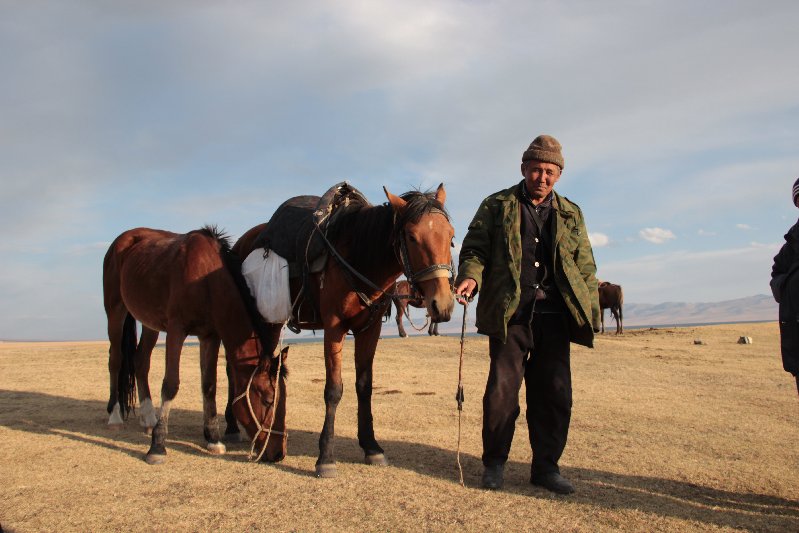
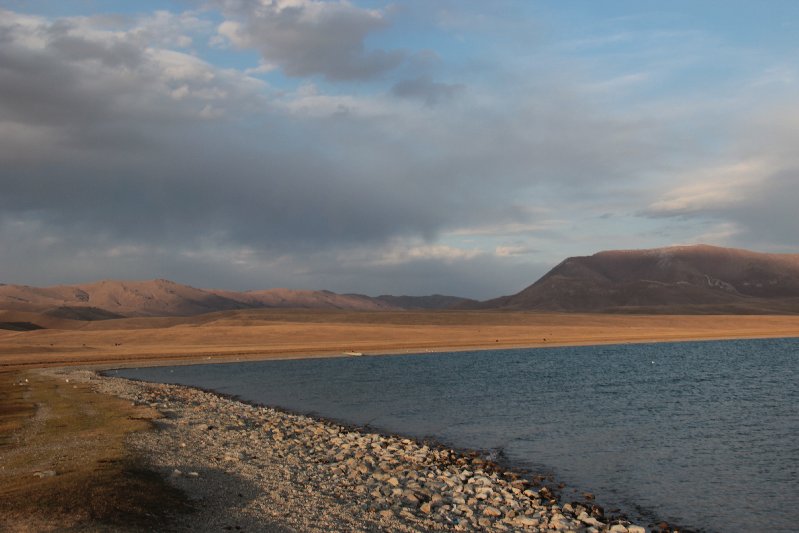

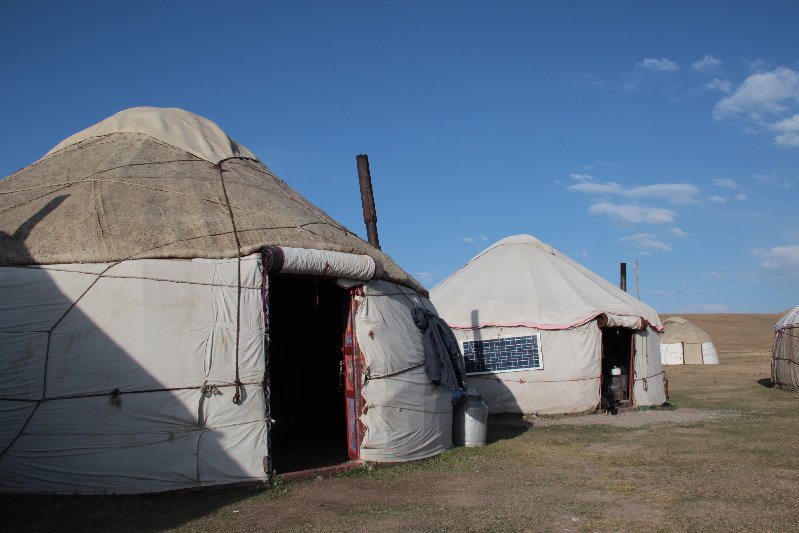
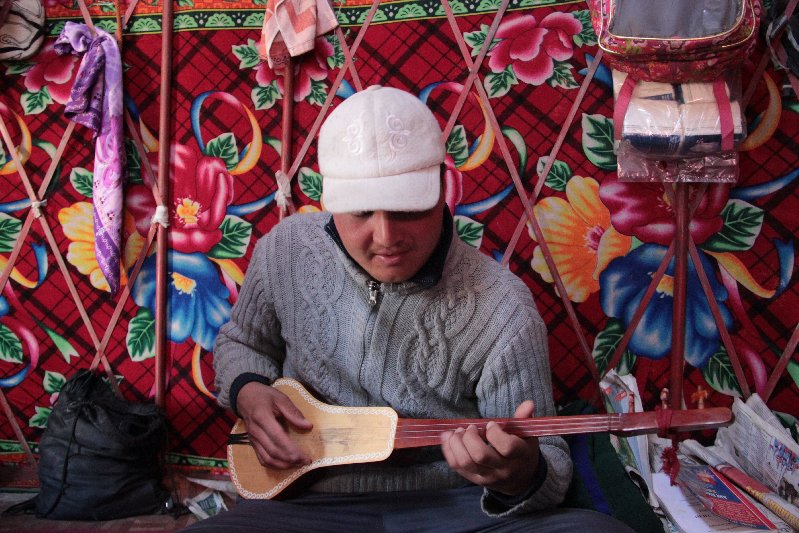

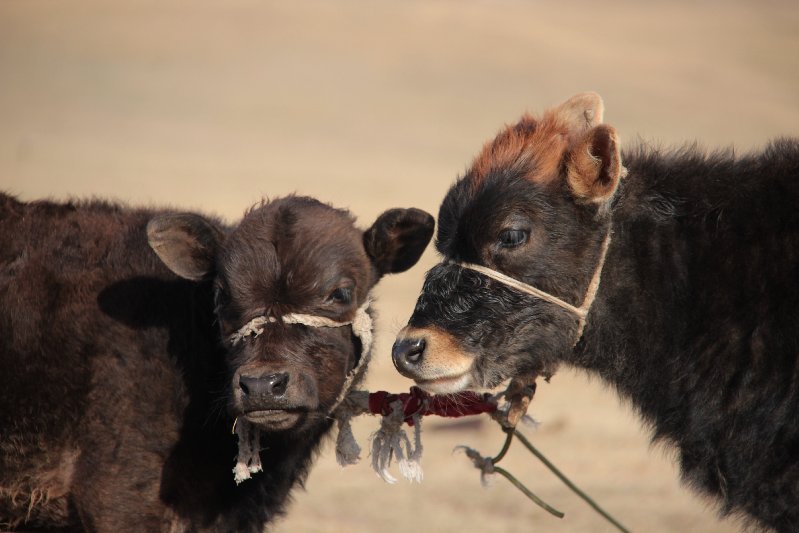

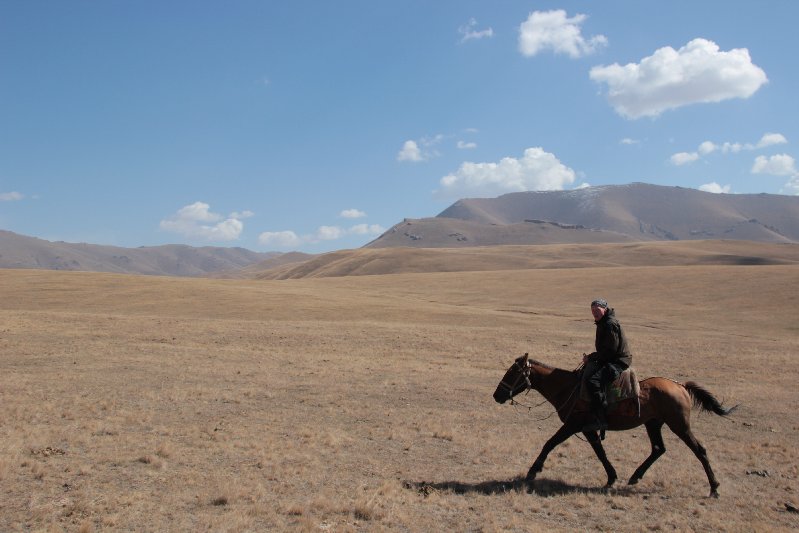
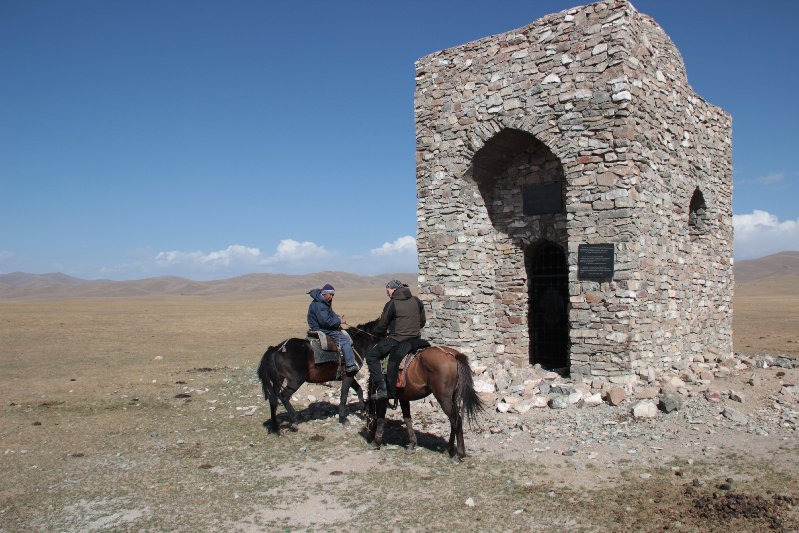
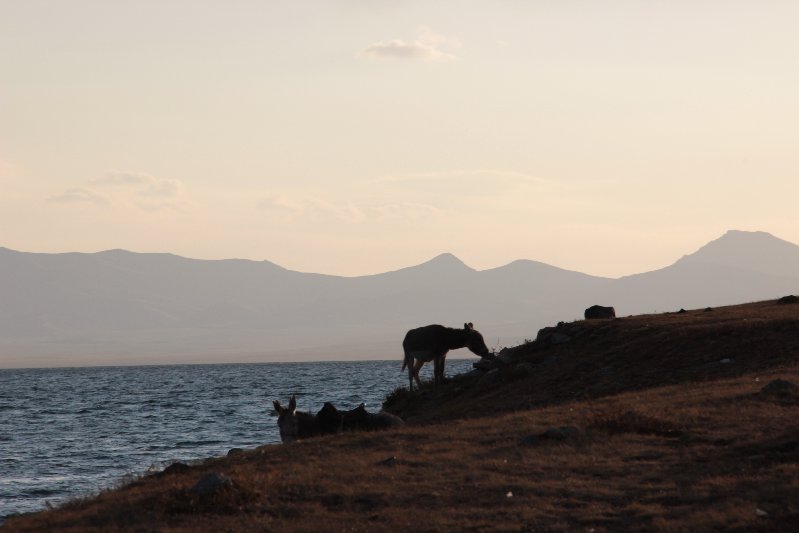
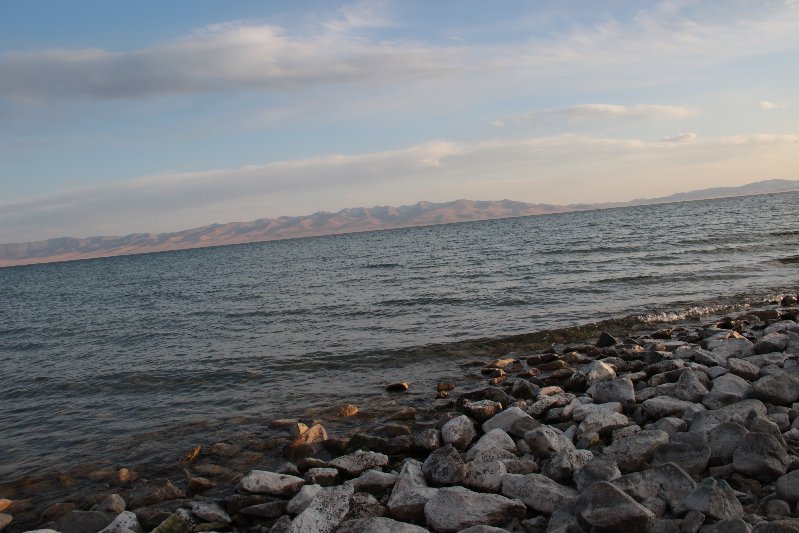
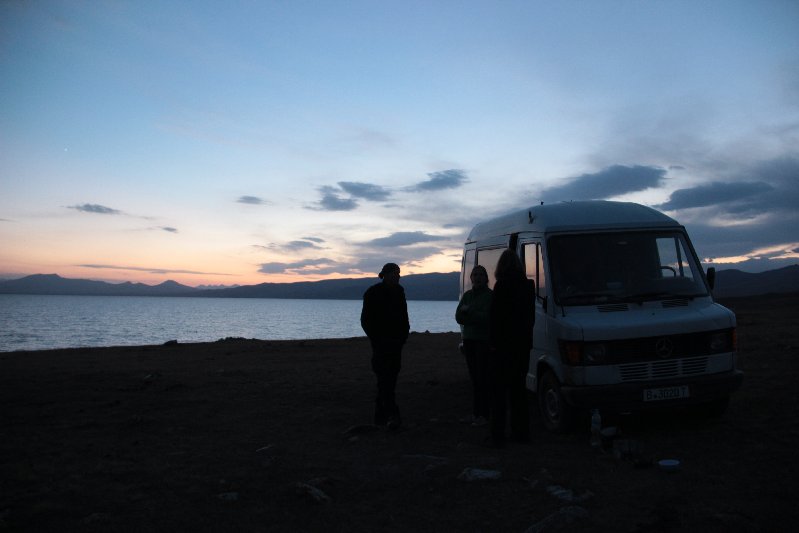

Leave A Comment